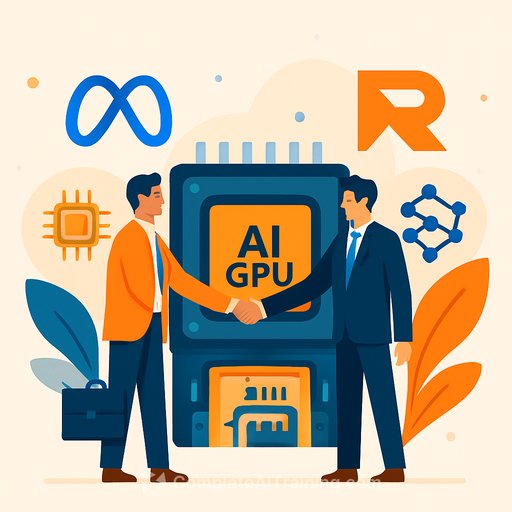Meta's Reported Rivos Deal: What Engineers Should Prepare For
Meta is said to be acquiring Rivos to accelerate its in-house chip strategy for AI. Rivos is developing a GPU, while Meta already runs an internal accelerator program called the Meta Training and Inference Accelerator (MTIA). Even with MTIA, Meta spends heavily on third-party GPUs, especially from Nvidia.
If this deal closes, expect Meta to tighten control over cost, supply, and performance across training and inference. For engineering teams, this signals more diversity in accelerator targets and more emphasis on portability and low-level performance work.
Why this matters
- Reduced vendor risk: Less exposure to single-supplier constraints and pricing.
- Workload fit: Chips tuned for LLMs, recsys, and ranking workloads Meta cares about.
- Software fragmentation: More backends to support across compilers, kernels, and runtime.
- Costs at scale: Custom silicon can shift total cost of ownership for large clusters.
Technical areas to watch
- Architecture differences: Threading model, tensor cores/matrix units, memory hierarchy, and interconnects will drive kernel design and operator fusion choices.
- Compiler stack: PyTorch 2.x Inductor/TorchDynamo and Triton-style kernel generation may need backend-specific optimizations. See PyTorch 2.0 and Triton integration work.
- Model portability: Favor ONNX or stable IRs to keep options open across silicon. Reference: ONNX.
- Training vs. inference split: Expect MTIA and any Rivos-derived GPU to take different roles; plan for heterogeneous scheduling and mixed precision policies.
- Perf/Watt and memory: Attention-heavy models are bound by bandwidth and cache behavior; watch SRAM/HBM configs and collective communication performance.
Impact on your roadmap
- Hedge beyond CUDA: Keep ROCm, SYCL, and vendor-agnostic kernels in play to avoid platform traps.
- Double down on kernels: Build competency in Triton/custom CUDA-equivalent kernels, profiling, and fusion strategies for attention, normalization, and MoE routing.
- MLOps updates: Expand cluster abstraction to schedule across heterogeneous accelerators; treat backend selection as a first-class tunable.
- Procurement inputs: Benchmark with realistic batch sizes, sequence lengths, and comm patterns; include SLAs for availability and firmware/driver stability.
- Talent mix: Compilers (MLIR/LLVM), graph-level optimization, and high-speed interconnects (collectives, topology-aware placement) become core skills.
Practical next steps
- Audit your stack for portability debt: CUDA-only ops, custom kernels without fallback, or vendor-specific graph passes.
- Pilot on alternative hardware backends to de-risk: e.g., run representative jobs on ROCm or other accelerators; compare end-to-end time-to-train and cost.
- Adopt intermediate representations and AOT compilation where feasible to shorten bring-up on new silicon.
- Invest in quantization, sparsity, and activation checkpointing to reduce memory pressure across varied memory subsystems.
- Track Meta's MTIA software interfaces and any forthcoming GPU APIs to anticipate integration work.
Bottom line
Meta moving deeper into custom accelerators means more choice-and more complexity-for engineering teams. Prioritize portability, kernel expertise, and rigorous benchmarking so you can switch, scale, and ship regardless of which logo sits on the chip.
Level up your skills: If you're expanding into kernels, compilers, or multi-backend MLOps, see curated learning paths at Complete AI Training - Courses by Skill.
Your membership also unlocks:






